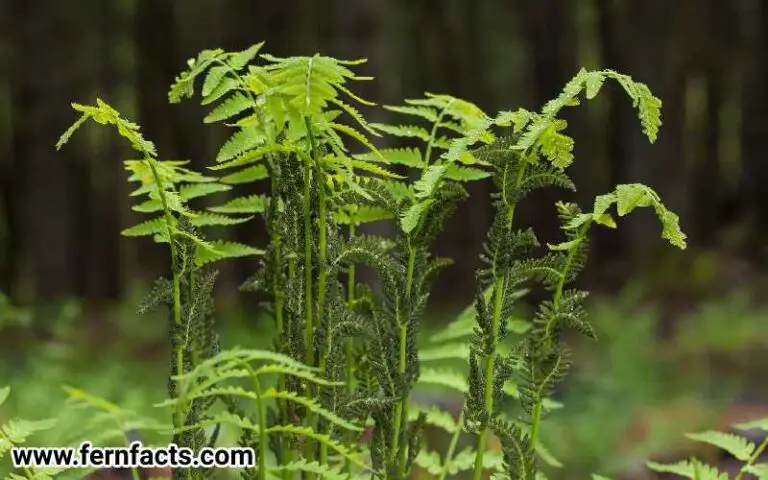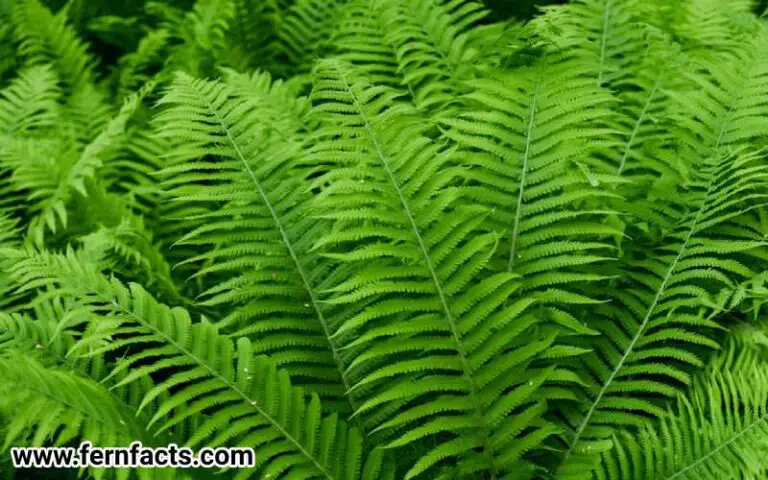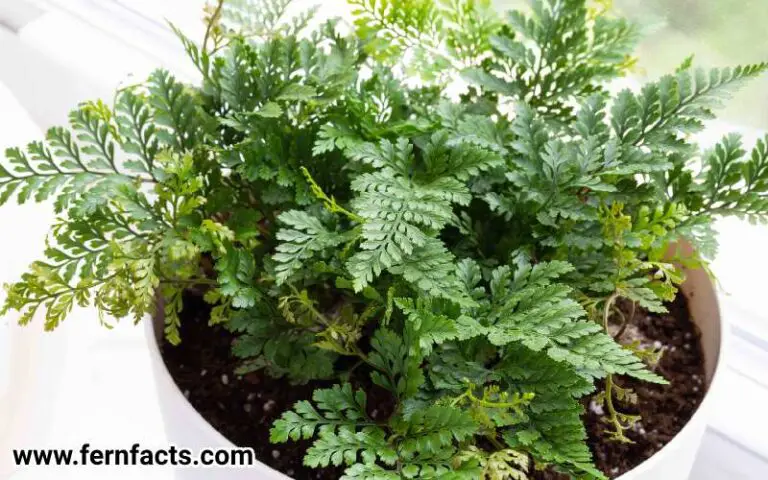Best Ferns for Hanging Baskets – Enjoy Beautiful Results
Hanging baskets can be an excellent addition to a yard, patio, deck or even secured to an overhang on the house. They add a sense of nature without you needing to put in the time and effort to create an entire garden.
Hanging baskets also provide versatility in that you can swap out the items in the basket from year to year or even mix and match, hanging a few different types of baskets around the exterior of your house. Play with basket colors, materials, and sizes for added interest.
But as for what to put in the hanging basket, there’s one plant that always proves popular: a fern. Ferns can feel tropical, soothing, and inviting thanks to their simplicity and the lovely way they sway in the breeze. Because their leaves aren’t flat and bare, they also bring a sense of natural texture and a bright pop of green.
But simply stating that you want a fern for a hanging basket isn’t enough. Here we’ll look at the best ferns for hanging baskets, weighing the pros and cons. This information will help you to pick the suitable fern for your space and your expectations.
Benefits of Using Ferns for Hanging Baskets
If you’ve never had hanging baskets before, you may wonder what the fuss is about. What makes a hanging basket such an excellent option for your home?
There are several benefits, with the first being convenience. Think about how much time, energy, and cost to plant a garden from scratch.
For it to thrive, you’ll need to put a lot of care and maintenance into it, and there’s a chance that only some plants will survive.
And speaking of thriving, it takes years for a garden to fill in and mature, which means you’ll enjoy the full effect afterward.
A hanging basket, on the other hand, provides immediate results. You can fill it right away, there’s no need to wait and watch it get bigger, and it costs a fraction of the cost and time to plant. You can purchase a basket with planted fern, saving you more time and energy.
Just like with a traditional garden, hanging baskets bring nature to your space, and it’s up to you to decide just how many baskets you want and the best placement.
Many love the different textures that ferns come in, adding something unexpected to the outdoor decor. Ferns have an understated casual quality that works with all different design and décor styles.
It’s also worth noting that a hanging basket with a fern doesn’t just work outdoors; it can also be used indoors with the right light and temperature conditions.
Best Types of Ferns for Hanging Baskets
With so many types of ferns available, it can be overwhelming to pick one that will do well in a basket and last longer here.
Here are a few known for doing quite well in hanging baskets, each with its pros and cons. It comes down to picking one that matches your style, what you like, and how much work you’re willing to put into maintaining a healthy plant.
Boston Fern
If you want an all-around easy-going, low-maintenance fern that also looks fabulous, the Boston Fern is often the way to go.
This tends to be the most well-known fern and typically the easiest to find when shopping around. You can grow this one outdoors all year long for those who live in warm climates.
If you live in an area that experiences cold winters, bring them inside during the fall and winter months so the fern stays healthy.
A couple of things to note about Boston ferns are that they do best with morning sun, as the afternoon sun can be too intense, they shouldn’t be placed in direct sunlight indoors, and they like well-drained soil that is kept moist.
Bird’s Nest Fern
The Bird’s Nest Fern is a unique option that doesn’t resemble a traditional or typical fern. Its beautiful bright green leaves are solid and feature undivided fonds. Interestingly, the central rib in each fond has a dark color; it’s eye-catching, to say the least.
And here’s something that may come as a surprise, the fonds can grow up to five feet in length. Remember, if you hang the evergreen fern plants indoors, they will be much shorter since they grow so much slower indoors.
If you’re keen on hanging your basket outdoors, be sure to wait until spring, as they won’t be able to tolerate the cool temperatures.
Maidenhair Fern
Then there is the Maidenhair Fern which has a very delicate look. This one will sway beautifully in the wind, creating a natural ambiance outdoors.
Its fronds almost look like lace, with each one looking unique. If you like classic, graceful beauty, the Maidenhair Fern is ideal.
This particular variety grows to 1-2 feet tall and 1-2 feet wide; it prefers partial sun or shade and is relatively low-maintenance.
Staghorn Fern
Here’s a fern that doesn’t look like a classic or traditional fern, making it unique enough that you’ll want to add it to a basket.
Staghorn Ferns get their name because they often resemble a deer antler. This variety is native to Australia and Asia, but you can still have them here.
Staghorn Ferns should be lightly fertilized, misted, and watered regularly to thrive. It enjoys partial sun, and the soil type should be acidic.
Rabbit’s Foot Fern
Finally, the Rabbit’s Foot Ferns is perfect for those looking for a perennial fern. Hang this one inside or outside (as long as it’s warm).
This one is known for being low-maintenance and hardy but a slow grower. It grows to 1-2 feet in height. What makes this one such a beauty is its furry rhizomes that creep out over the edge of the basket or pot it is in.
They look like furry little feet reaching out of the bottom, where they get their name.
Care Requirements for Ferns in Hanging Baskets
Now that you’ve gone to the trouble to find the perfect fern for your hanging basket and place it in the ideal location, you want to be sure it thrives. That means providing the proper care.
Ferns do well in humid, warm conditions, but that doesn’t mean they need full afternoon sun. As mentioned above, too much sun can damage them and even burn the fern.
Generally speaking, ferns should get 1 to 2 inches of water per week, whether that be naturally from rainfall or watering them. Ferns should get daily watering so that the soil is always moist.
Ensure the basket allows drainage from the bottom so the fern never gets water-logged. Ferns also prefer watering the soil just above their roots, not from above.
Staying on top of any pest and disease prevention is also essential. Fern mites are notorious for causing damage and can result in deformed leaves or leaves that won’t grow.
If you notice the leaves turning bronze, there’s a good chance you have fern mites. Be sure to use an insecticide immediately.
Some ask how to reach the right humidity level if your hanging fern is indoors.
You can use a few tips, such as daily misting, using a humidifier indoors, placing them in a humid room like the bathroom, or even putting them near other plants so they can feed off each other’s humidity levels. In terms of the ideal humidity level for ferns, is about 70%.
If you wish to give them fertilizer, opt for something balanced that doesn’t contain high amounts of nitrogen. You can try a 20-10-20 or 20-20-20 mix.
Ferns Make for a Lovely Hanging Basket Option
So if you’re looking to branch out and use hanging baskets in and outside your house, check out the different varieties of ferns that thrive in baskets.
Their natural beauty is unsurpassed and can help to create a more serene atmosphere.







